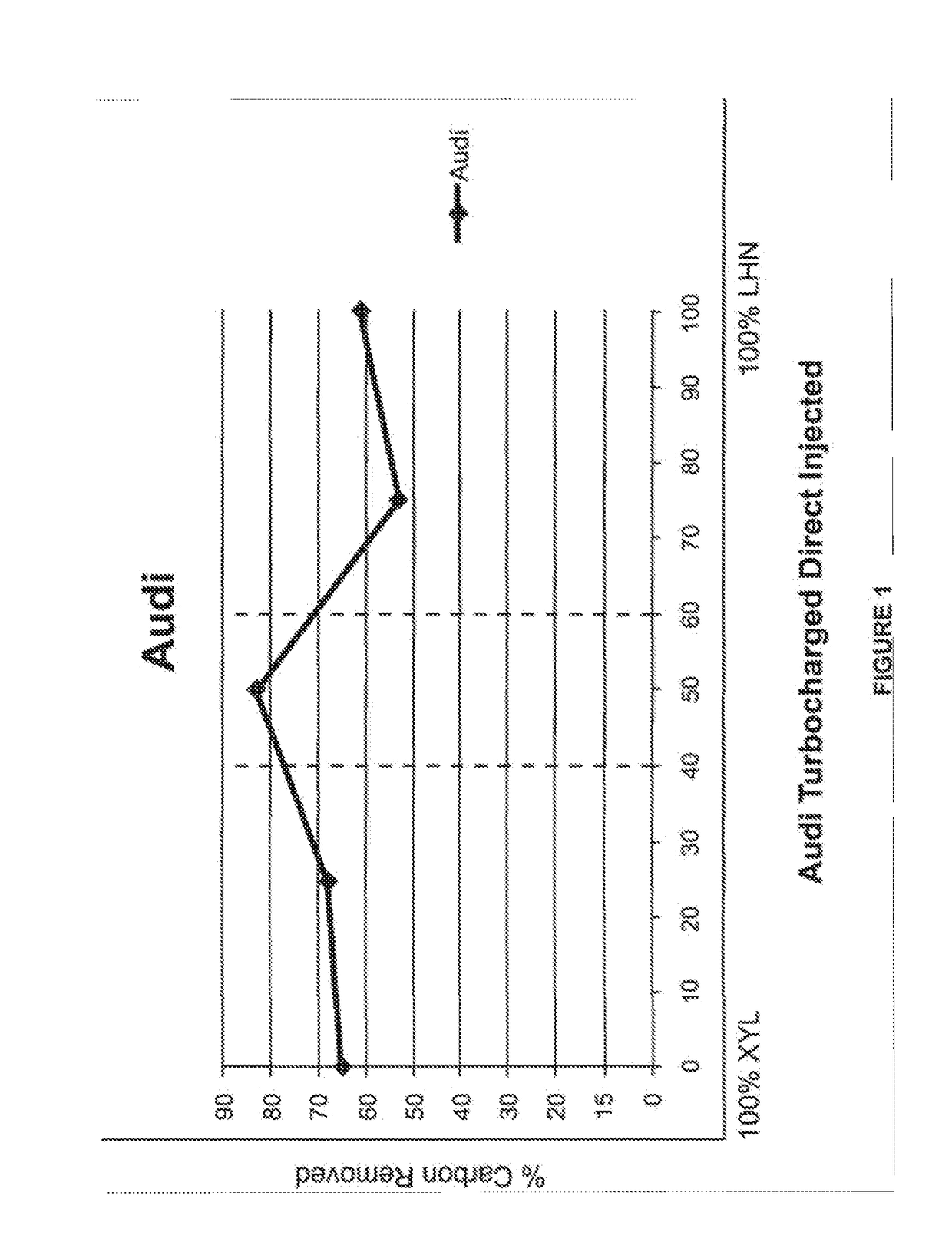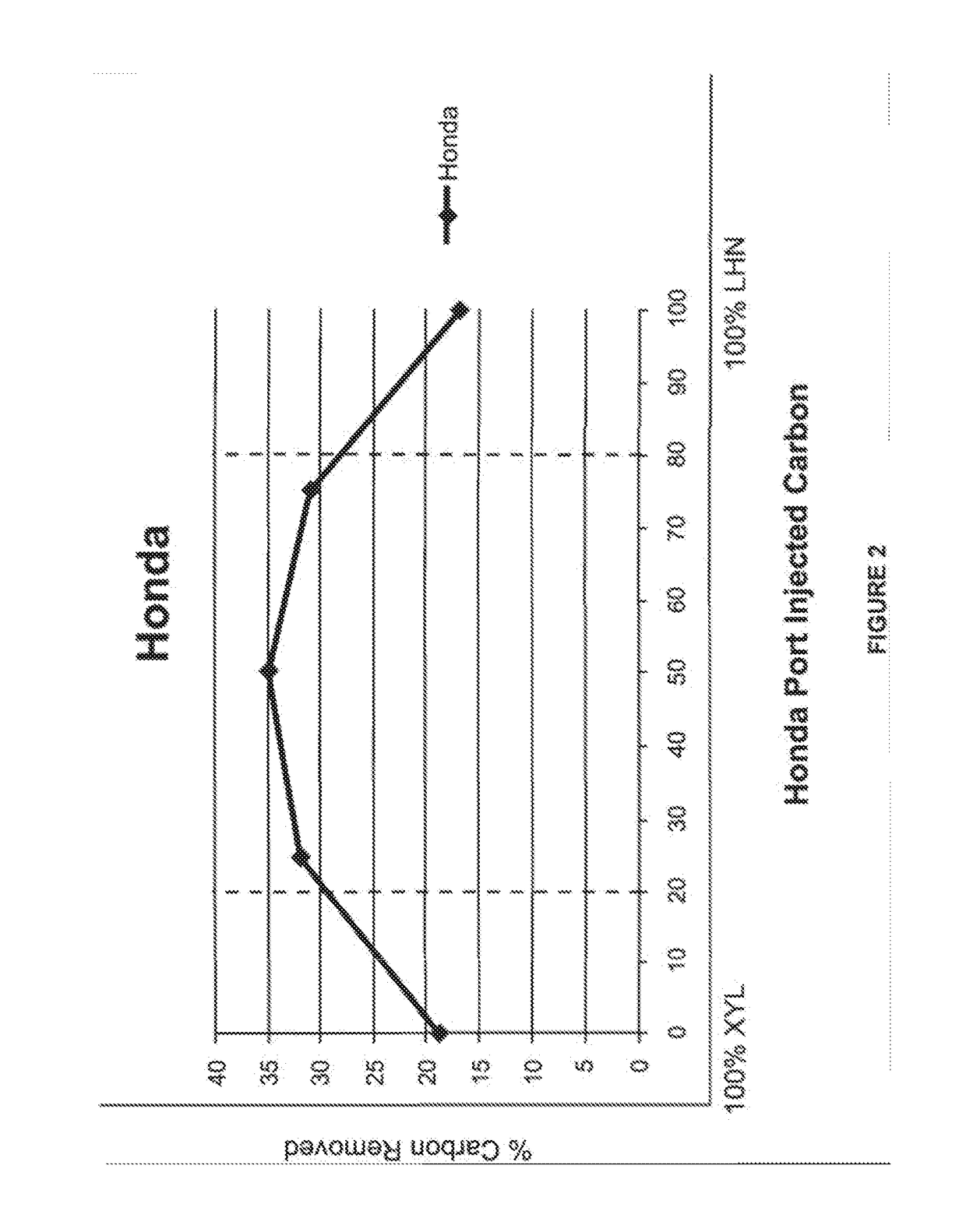Compositions for Engine Carbon Removal from Lubricated components
a technology of lubricating components and compositions, which is applied in the direction of machines/engines, mechanical equipment, fuels, etc., can solve the problems of time-consuming and expensive methods, unwelcome carbon deposits, and inability to remove them from engines
- Summary
- Abstract
- Description
- Claims
- Application Information
AI Technical Summary
Benefits of technology
Problems solved by technology
Method used
Image
Examples
Embodiment Construction
[0067]An in-depth understanding of carbon types and chemicals and chemical mixtures tested for their effectiveness in breaking down carbon accumulations is imperative in order to successfully remove these carbon deposits from road vehicle internal combustion engines. In order to accomplish this a testing procedure was developed including: (1) chemical and chemical mixture bench testing of road vehicle carbon (this is carbon that has been carefully removed by hand from the induction system and combustion chambers of road vehicle engines for the purpose of identifying and testing various carbon types and the effects of various chemicals and chemical mixtures on such various carbon types); and (2) testing the same types of carbon in running road vehicle engines with the same chemicals and chemical mixtures applied to the induction systems of such engines. In step (1) the carbon being tested is weighed both before and after the chemical (or chemical mixture) is applied, so that the amou...
PUM
| Property | Measurement | Unit |
|---|---|---|
| thickness | aaaaa | aaaaa |
| thickness | aaaaa | aaaaa |
| boiling point | aaaaa | aaaaa |
Abstract
Description
Claims
Application Information
 Login to View More
Login to View More - R&D
- Intellectual Property
- Life Sciences
- Materials
- Tech Scout
- Unparalleled Data Quality
- Higher Quality Content
- 60% Fewer Hallucinations
Browse by: Latest US Patents, China's latest patents, Technical Efficacy Thesaurus, Application Domain, Technology Topic, Popular Technical Reports.
© 2025 PatSnap. All rights reserved.Legal|Privacy policy|Modern Slavery Act Transparency Statement|Sitemap|About US| Contact US: help@patsnap.com



